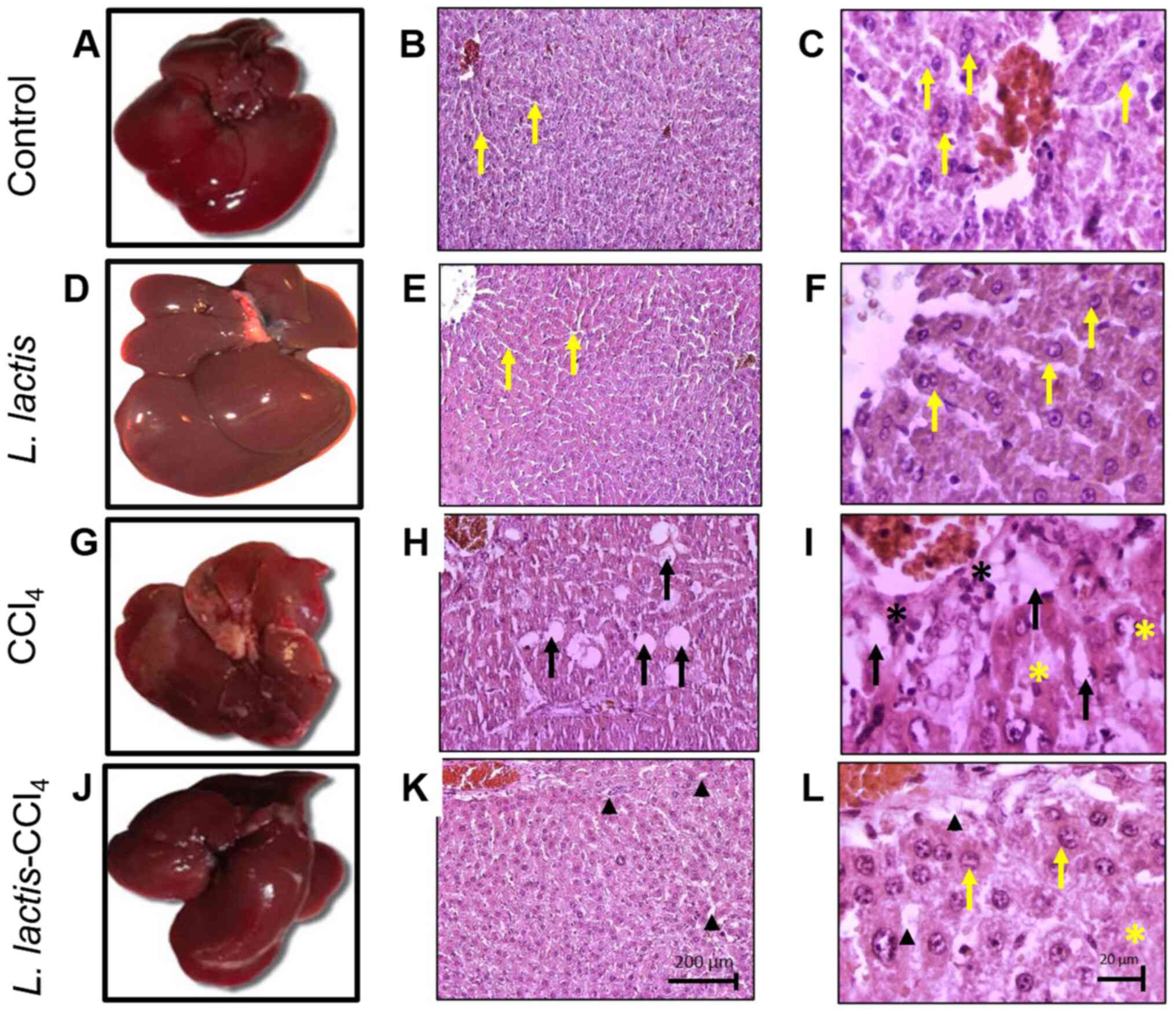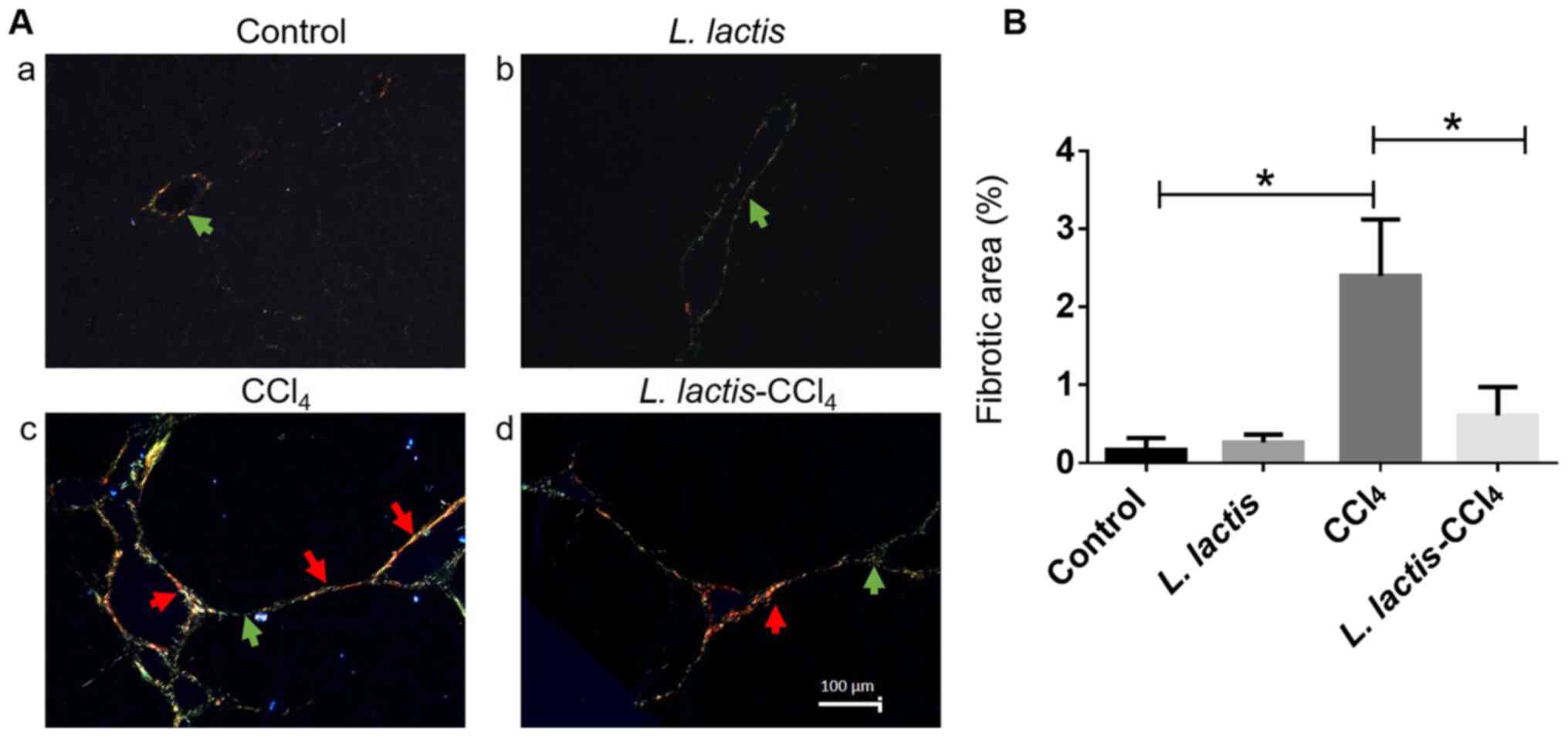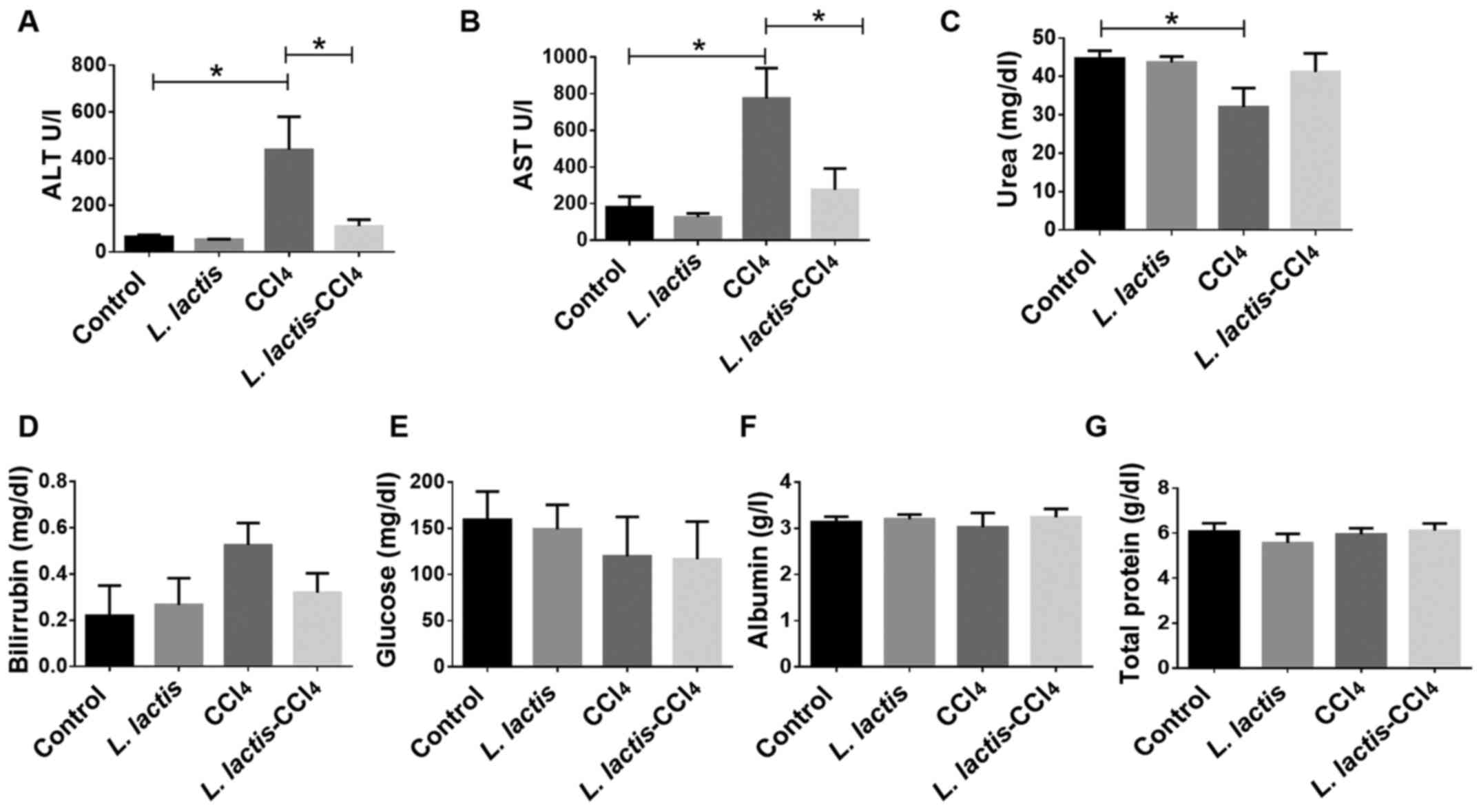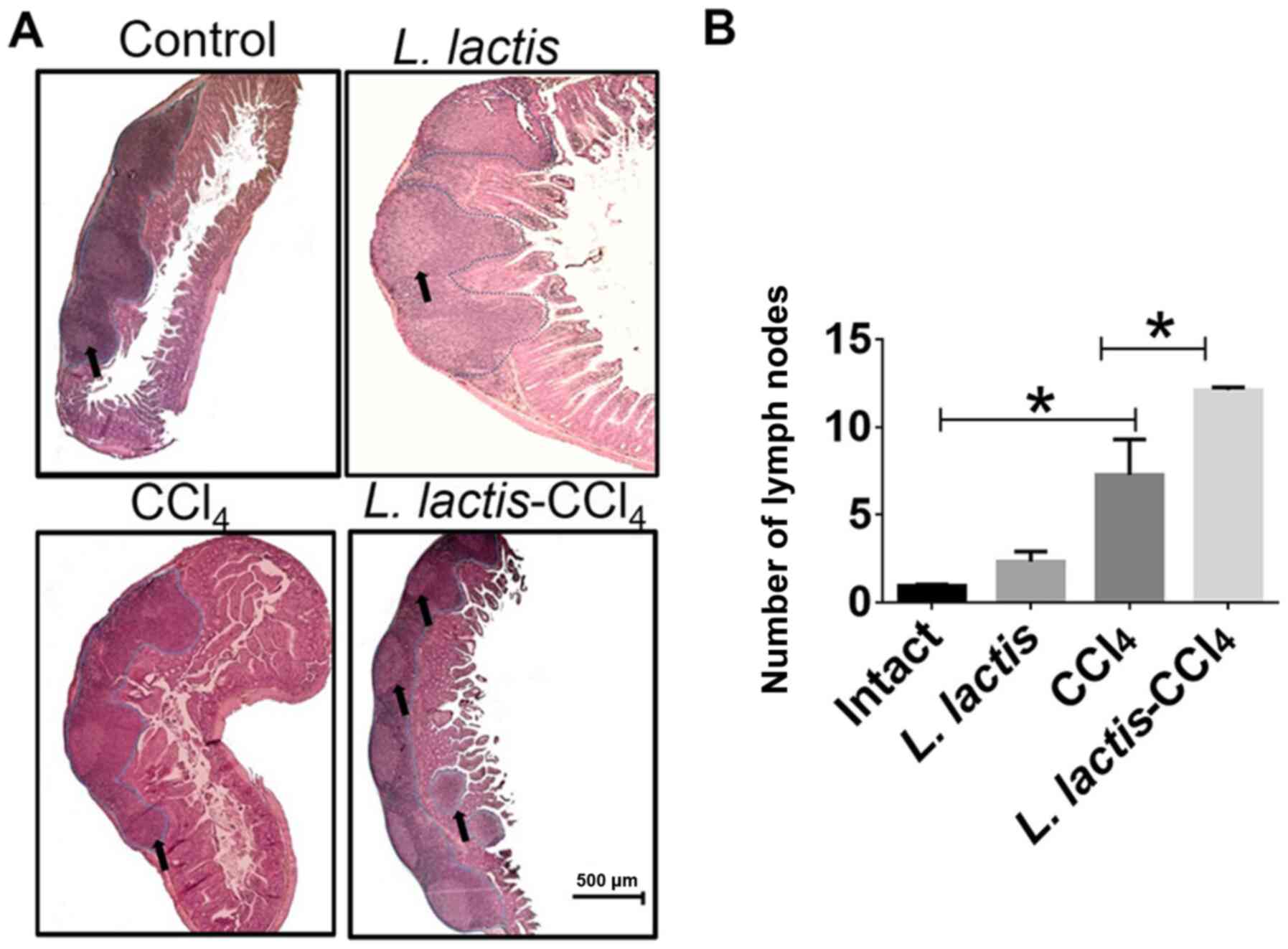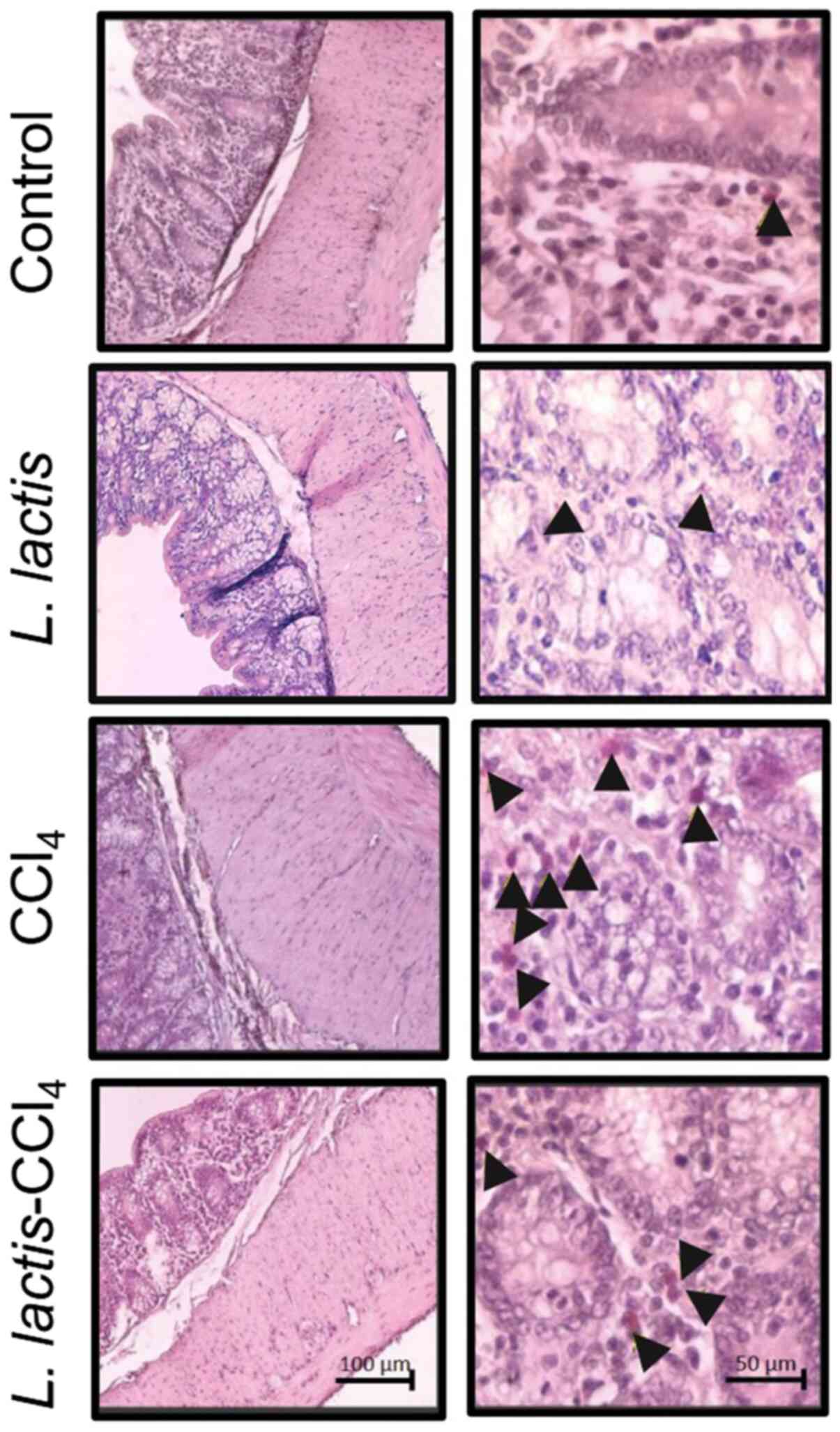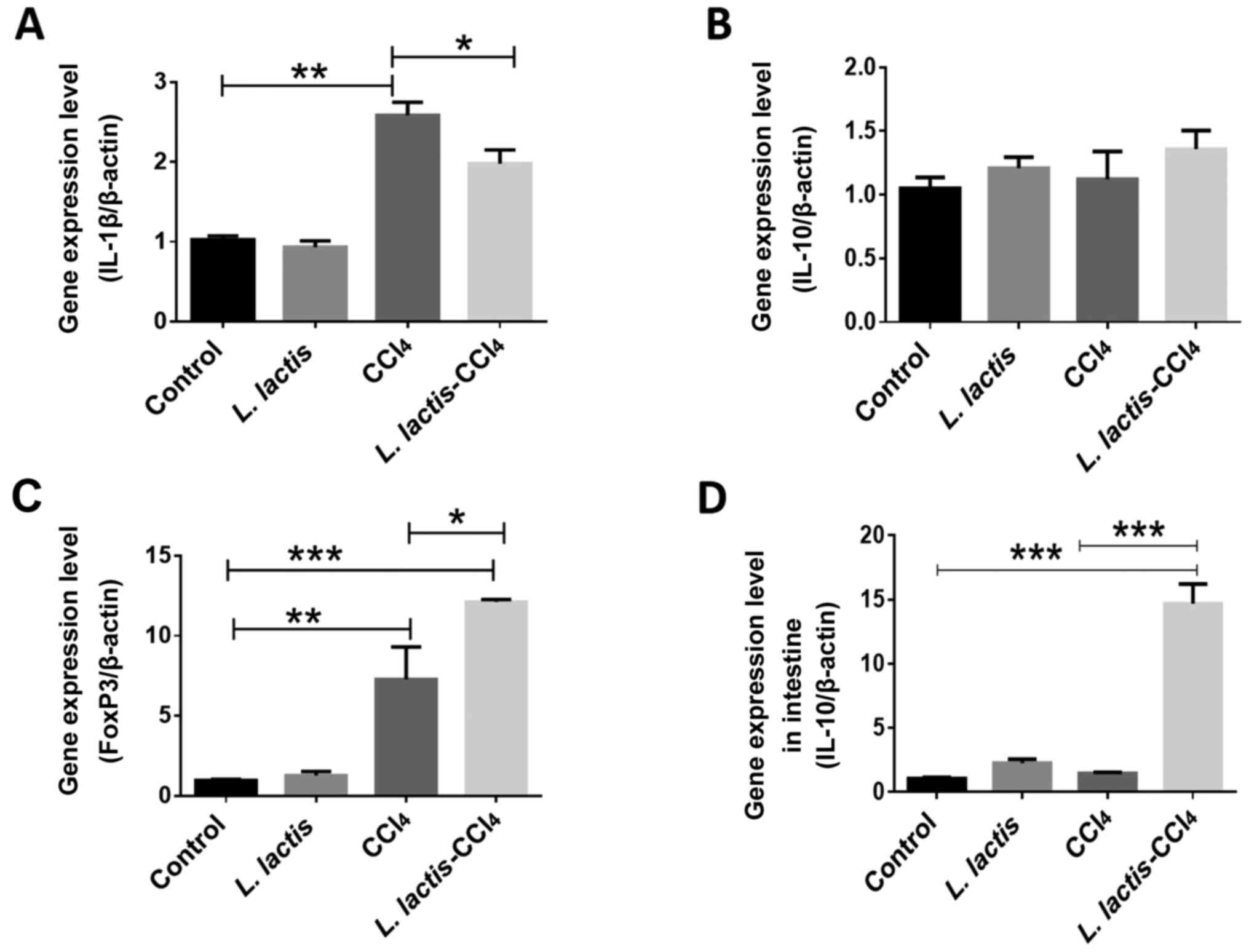|
1
|
Friedman SL: Mechanisms of hepatic
fibrogenesis. Gastroenterology. 134:1655–1669. 2008.PubMed/NCBI View Article : Google Scholar
|
|
2
|
Wick G, Backovic A, Rabensteiner E, Plank
N, Schwentner C and Sgonc R: The immunology of fibrosis: Innate and
adaptive responses. Trends Immunol. 31:110–119. 2010.PubMed/NCBI View Article : Google Scholar
|
|
3
|
Wick G, Grundtman C, Mayerl C,
Wimpissinger TF, Feichtinger J, Zelger B, Sgonc R and Wolfram D:
The immunology of fibrosis. Annu Rev Immunol. 31:107–135.
2013.PubMed/NCBI View Article : Google Scholar
|
|
4
|
Wynn TA: Cellular and molecular mechanisms
of fibrosis. J Pathol. 214:199–210. 2008.PubMed/NCBI View Article : Google Scholar
|
|
5
|
Kershenobich Stalnikowitz D and Weissbrod
AB: Liver fibrosis and inflammation. A review. Ann Hepatol.
2:159–163. 2003.PubMed/NCBI
|
|
6
|
Romanelli RG and Stasi C: Recent
advancements in diagnosis and therapy of liver cirrhosis. Curr Drug
Targets. 17:1804–1817. 2016.PubMed/NCBI View Article : Google Scholar
|
|
7
|
Khan H, Ullah H and Nabavi SM: Mechanistic
insights of hepatoprotective effects of curcumin: Therapeutic
updates and future prospects. Food Chem Toxicol. 124:182–191.
2019.PubMed/NCBI View Article : Google Scholar
|
|
8
|
Serna-Salas SA, Navarro-González YD,
Martínez-Hernández SL, Barba-Gallardo LF, Sánchez-Alemán E,
Aldaba-Muruato LR, Macías-Pérez JR, Ventura-Juárez J and
Muñoz-Ortega MH: Doxazosin and carvedilol treatment improves
hepatic regeneration in a hamster model of cirrhosis. Biomed Res
Int. 2018(4706976)2018.PubMed/NCBI View Article : Google Scholar
|
|
9
|
Khawar MB, Azam F, Sheikh N and Abdul
Mujeeb K: How does interleukin-22 mediate liver regeneration and
prevent injury and fibrosis? J Immunol Res.
2016(2148129)2016.PubMed/NCBI View Article : Google Scholar
|
|
10
|
Abd-Elgawad H, Abu-Elsaad N, El-Karef A
and Ibrahim T: Piceatannol increases the expression of hepatocyte
growth factor and IL-10 thereby protecting hepatocytes in
thioacetamide-induced liver fibrosis. Can J Physiol Pharmacol.
94:779–787. 2016.PubMed/NCBI View Article : Google Scholar
|
|
11
|
Bajaj JS, Heuman DM, Hylemon PB, Sanyal
AJ, White MB, Monteith P, Noble NA, Unser AB, Daita K, Fisher AR,
et al: Altered profile of human gut microbiome is associated with
cirrhosis and its complications. J Hepatol. 60:940–947.
2014.PubMed/NCBI View Article : Google Scholar
|
|
12
|
Moraes-Filho JP and Quigley EM: The
intestinal microbiota and the role of probiotics in irritable bowel
syndrome: A review. Arq Gastroenterol. 52:331–338. 2015.PubMed/NCBI View Article : Google Scholar
|
|
13
|
Festen EAM, Szperl AM, Weersma RK,
Wikmenga C and Wapenaar MC: Inflammatory bowel disease and celiac
disease: Overlaps in the pathology and genetics, and their
potential drug targets. Endocr Metab Immune Disord Drug Targets.
9:199–218. 2009.PubMed/NCBI View Article : Google Scholar
|
|
14
|
Lee NK, Kim SY, Han KJ, Eom SJ and Paik
HD: Probiotic potential of Lactobacillus strains with
anti-allergic effects from kimchi for yogurt starters. LWT Food Sci
Technol. 58:130–134. 2014.
|
|
15
|
Haller D, Bode C, Hammes WP, Pfeifer AM,
Schiffrin EJ and Blum S: Non-pathogenic bacteria elicit a
differential cytokine response by intestinal epithelial
cell/leucocyte co-cultures. Gut. 47:79–87. 2000.PubMed/NCBI View Article : Google Scholar
|
|
16
|
Fabia R, Ar'Rajab A, Johansssib ML, Willén
R, Andersson R, Molin G and Bengmark S: The effect of exogenous
administration of Lactobacillus reuteri R2LC and oat fiber
on acetic acid-induced colitis in the rat. Scand J Gastroenterol.
28:155–162. 1993.PubMed/NCBI View Article : Google Scholar
|
|
17
|
Mao Y, Nobaeck S, Kasravi B, Adawi D,
Stenram U, Molin G and Jeppsson B: The effects of Lactobacillus
strains and oat fiber on methotrexate-induced enterocolitis in
rats. Gastroenterology. 111:334–344. 1996.PubMed/NCBI View Article : Google Scholar
|
|
18
|
Bhat M, Arendt BM, Bhat V, Renner EL,
Humar A and Allard JP: Implication of the intestinal microbiome in
complications of cirrhosis. World J Hepatol. 8:1128–1136.
2016.PubMed/NCBI View Article : Google Scholar
|
|
19
|
Parapouli M, Delbès-Paus C, Kakouri A,
Koukkou AI, Montel MC and Samelis J: Characterization of a wild,
novel nisin a-producing Lactococcus strain with an L.
lactis subsp. cremoris genotype and an L. lactis
subsp. lactis phenotype, isolated from Greek raw milk. Appl Environ
Microbiol. 79:3476–3484. 2013.PubMed/NCBI View Article : Google Scholar
|
|
20
|
Duwat P, Sourice S, Cesselin B, Lamberet
G, Vido K, Gaudu P, Le Loir Y, Violet F, Loubière P and Gruss A:
Respiration capacity of the fermenting bacterium Lactococcus
lactis and its positive effects on growth and survival. J
Bacteriol. 183:4509–4516. 2001.PubMed/NCBI View Article : Google Scholar
|
|
21
|
Garrigues C, Loubiere P, Lindley ND and
Cocaign-Bousquet M: Control of the shift from homolactic acid to
mixed-acid fermentation in Lactococcus lactis: Predominant
role of the NADH/NAD+ ratio. J Bacteriol. 179:5282–5287.
1997.PubMed/NCBI View Article : Google Scholar
|
|
22
|
Daniel C, Repa A, Wild C, Pollak A, Pot B,
Breiteneder H, Wiedermann U and Mercenier A: Modulation of allergic
immune responses by mucosal application of recombinant lactic acid
bacteria producing the major birch pollen allergen Bet v 1.
Allergy. 61:812–819. 2006.PubMed/NCBI View Article : Google Scholar
|
|
23
|
Alvarenga DM, Perez DA, Gomes-Santos AC,
Miyoshi A, Azevedo V, Coelho-Dos-Reis JG, Martins-Filho OA, Faria
AM, Cara DC and Andrade MC: Previous ingestion of Lactococcus
lactis by ethanol-treated mice preserves antigen presentation
hierarchy in the gut and oral tolerance susceptibility. Alcohol
Clin Exp Res. 39:1453–1464. 2015.PubMed/NCBI View Article : Google Scholar
|
|
24
|
Marinho FA, Pacífico LG, Miyoshi A,
Azevedo V, Le Loir Y, Guimarães VD, Langella P, Cassali GD, Fonseca
CT and Oliveira SC: An intranasal administration of Lactococcus
lactis strains expressing recombinant interleukin-10 modulates
acute allergic airway inflammation in a murine model. Clin Exp
Allergy. 40:1541–1551. 2010.PubMed/NCBI View Article : Google Scholar
|
|
25
|
Nishitani Y, Tanoue T, Yamada K, Ishida T,
Yoshida M, Azuma T and Mizuno M: Lactococcus lactis subsp.
cremoris FC alleviates symptoms of colitis induced by
dextran sulfate sodium in mice. Int Immunopharmacol. 9:1444–1451.
2009.PubMed/NCBI View Article : Google Scholar
|
|
26
|
Luerce TD, Gomes-Santos AC, Rocha CS,
Moreira TG, Cruz DN, Lemos L, Sousa AL, Pereira VB, de Azevedo M,
Moraes K, et al: Anti-inflammatory effects of Lactococcus
lactis NCDO 2118 during the remission period of chemically
induced colitis. Gut Pathog. 6(33)2014.PubMed/NCBI View Article : Google Scholar
|
|
27
|
Ballal SA, Veiga P, Fenn K, Michaud M, Kim
JH, Gallini CA, Glickman JN, Quéré G, Garault P, Béal C, et al:
Host lysozyme-mediated lysis of Lactococcus lactis
facilitates delivery of colitis-attenuating superoxide dismutase to
inflamed colons. Proc Natl Acad Sci USA. 112:7803–7808.
2015.PubMed/NCBI View Article : Google Scholar
|
|
28
|
Steidler L, Hans W, Schotte L, Neirynck S,
Obermeier F, Falk W, Fiers W and Remaut E: Treatment of murine
colitis by Lactococcus lactis secreting interleukin-10.
Science. 289:1352–1355. 2020.PubMed/NCBI View Article : Google Scholar
|
|
29
|
Livak KJ and Schmittgen TD: Analysis of
relative gene expression data using real-time quantitative PCR and
the 2(-Delta Delta C(T)) method. Methods. 25:402–408.
2001.PubMed/NCBI View Article : Google Scholar
|
|
30
|
Williams LM, Ricchetti G, Sarma U, Smallie
T and Foxwell BM: Interleukin-10 suppression of myeloid cell
activation-a continuing puzzle. Immunology. 113:281–292.
2004.PubMed/NCBI View Article : Google Scholar
|
|
31
|
Aller MA, Vara E, Garcia C, Palma MD,
Arias JL, Nava MP and Arias J: Proinflammatory liver and
antiinflammatory intestinal mediators involved in portal
hypertensive rats. Mediators Inflamm. 2005:101–111. 2005.PubMed/NCBI View Article : Google Scholar
|
|
32
|
US National Institutes of Health: NIH
human microbiome project. https://www.hmpdacc.org/overview/.
|
|
33
|
Kibe R, Sakamoto M, Yokota H, Ishikawa H,
Aiba Y, Koga Y and Benno Y: Movement and fixation of intestinal
microbiota after administration of human feces to germfree mice.
Appl Environ Microbiol. 71:3171–3178. 2005.PubMed/NCBI View Article : Google Scholar
|
|
34
|
Chen H, Xia Y, Zhu S, Yang J, Yao J, Di J,
Liang Y, Gao R, Wu W, Yang Y, et al: Lactobacillus plantarum
LP-nlly alters the gut flora and attenuates colitis by inducing
microbiome alteration in interleukin-10 knockout mice. Mol Med Rep.
16:5979–5985. 2017.PubMed/NCBI View Article : Google Scholar
|
|
35
|
Macpherson AJ and Uhr T: Induction of
protective IgA by intestinal dendritic cells carrying commensal
bacteria. Science. 303:1662–1665. 2004.PubMed/NCBI View Article : Google Scholar
|
|
36
|
Liu X, Lou J, Chen Y and Duan Z: Changes
of regulatory T cells related to CCl4-induced liver
fibrosis in mice. Zhonghua Gan Zang Bing Za Zhi. 22:277–280.
2014.PubMed/NCBI View Article : Google Scholar : (In Chinese).
|
|
37
|
Rios DA, Valva P, Casciato PC, Frias S,
Soledad Caldirola M, Gaillard MI, Bezrodnik L, Bandi J, Galdame O,
et al: Chronic hepatitis C liver microenvironment: Role of the
Th17/Treg interplay related to fibrogenesis. Sci Rep.
7(13283)2017.PubMed/NCBI View Article : Google Scholar
|
|
38
|
Schiffin EJ, Brassart D, Servin AL, Rochat
F and Donnet-Hughes A: Immune modulation of blood leukocytes in
humans by lactic acid bacteria: Criteria for strain selection. Am J
Clin Nutr. 66:515S–520S. 1997.PubMed/NCBI View Article : Google Scholar
|




